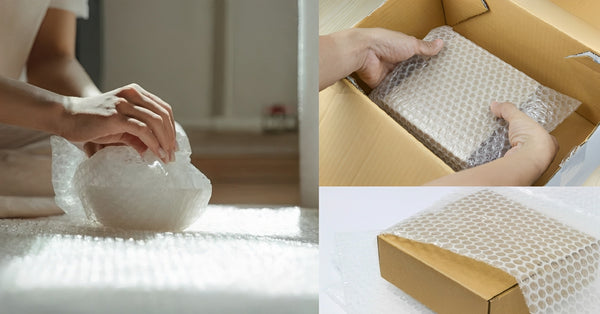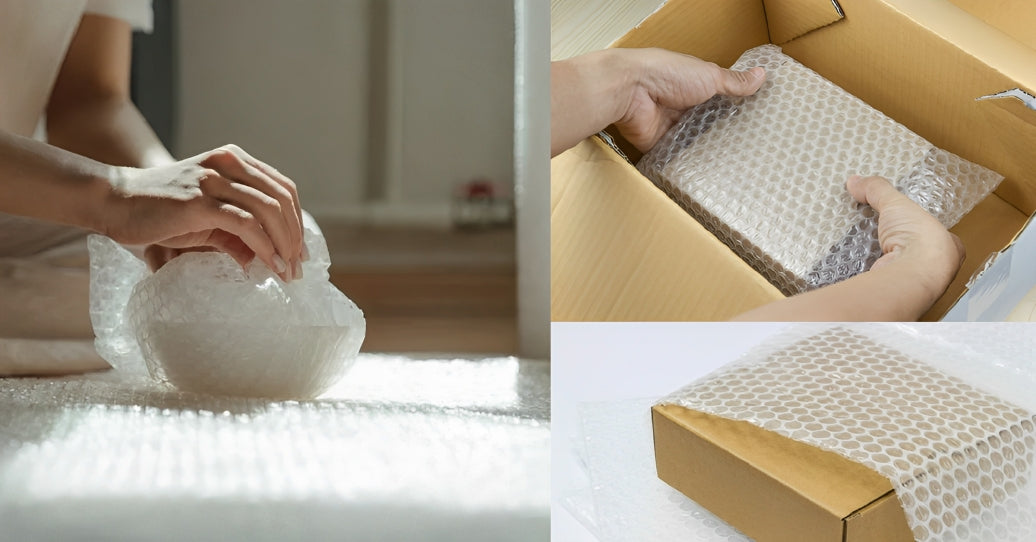Bubble wrap is a brilliant form of protective packaging and there is no better type of packaging for protection of delicate items. It has so many great uses which include house moving, storage and shipping, plus it is usually 100% recyclable too, so there is no reason to have to throw it out.
While moving house if you buy bubble wrap it will protect your most delicate objects from the kitchen which will include your glasses, mugs, plates and bowls. It will also protect your pictures and picture frames, as well as ornaments and any other delicate objects you might have. It will protect your things during transit in the removal lorry, as well as protecting your objects while they are being carried into and out of the house. It is quick and easy to use, as well as being low cost too, so these qualities make it perfect for moving house.

When using bubble wrap for storage purposes, it will not only protect from knocks and bumps if a box falls from a height by accident, or while it is being carried to be placed into storage, but it will also protect from water damage and dampness. This is especially important during storage, because water is the main cause of damage during storage.
When using bubble wrap for shipping, it will of course protect during transit from knocks and bumps as well as water damage if it rains too. Although most couriers will take the utmost care and attention to ensure that the packages arrive in great condition, it is not always going to be the case and accidents do happen. As they deal with many thousands of parcels each and every day, they cannot pay attention to each and every parcel with the most care that you would expect.
So how exactly does bubble wrap keep your items safe? What is the science behind it?
- Bubble wrap for packing is made up of thousands of tiny air bubbles, which are full of lots of tiny air particles inside of them.
- Some bubble wrap has larger air bubbles and others, which in turn have more air particles inside of them.
- The air bubbles and air particles work together to absorb shock from knocks and bumps in the best bubble wrap for moving. This means that no individual air bubble has to take the full force of an impact, as they will share the pressure amongst lots of them. This ensures that no air bubbles get popped and they are able to handle the largest knocks and bumps from the heaviest of objects. It also means they are able to carry on protecting your object throughout many different knocks and bumps during transit.
- The air particles within the bubbles also share the load between them and the material that surrounds the air bubbles is strong enough but also flexible, so it has a bit of give and take to create more space if needed. They can change shape to match the requirements of the surface that an object is touching against which further helps to provide protection.
- The material that surrounds the air particles is made from a waterproof material, which will certainly provide protection from water as long as it is secured in place carefully with some good quality tape around the edges.
- If you are protecting a really large and heavy object, then it can be a good idea to use larger bubbles for protection as they contain more air particles which will provide that bit of extra cushioning that is required. Alternatively, you can use several layers of ordinary bubble wrap around an object which will also provide more cushioning. It is cheaper to buy normal sized bubbles and use several layers than buying larger bubble wrap.
- Bubble wrap packaging is lightweight, so if you are using it for moving or shipping, it won’t add much to the weight of the parcel. This makes it cost effective and easy to use. It is also a low cost to purchase in the first place, so when you need lots of protection, it is the most economical option.
Take a moment to read the blog: Bubble Wrap: 5 Reasons You Need It When Packing





